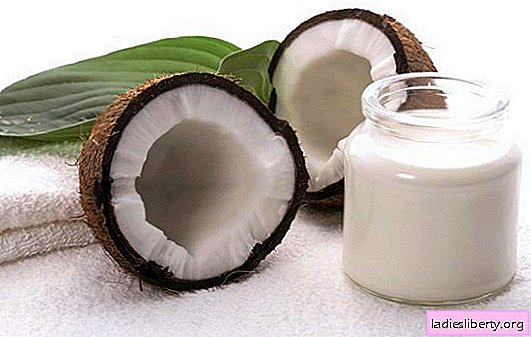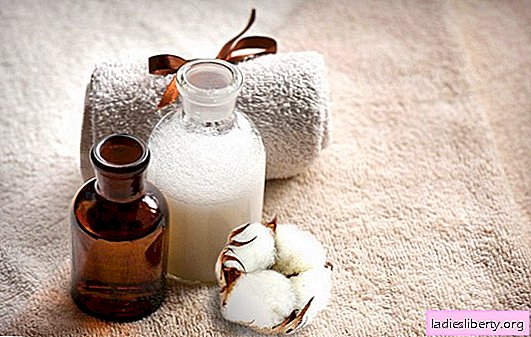
Atherosclerosis is an inflammatory disease that is characterized by the deposition of calcium-cholesterol plaques on the walls of blood vessels. Intima is initially damaged. Then endothelial cells are activated and adhesion molecules are released.
Monocytes migrate from blood to the vessel wall along with phagocytes and cholesterol. As a result, the so-called "foam cells" are formed.
Foam cells attract lymphocytes using cytokines. Inflammation leads to the destruction of collagen, the deposition of certain fractions of lipoproteins and cholesterol. The proliferation of connective tissue reduces vascular lumen up to complete blockage. Risk factors for developing atherosclerosis are divided into modifiable and uncontrolled. Uncontrolled risk factors include male gender, age, and family predisposition. Modifiable - smoking, diet, body weight and alcohol consumption.
Why is vascular cleansing folk remedies a useless exercise?
Atherosclerosis is an incurable vascular disease that progresses with age. Preventive therapy for atherosclerosis is aimed at changing the patient’s lifestyle: normalizing weight combined with sufficient physical exercise (jogging, swimming or cycling) and changing the diet.
Atherosclerosis reversing drugs do not exist. All folk remedies that are used to clean blood vessels are dummies. Vascular plaques can only be removed surgically.
Vascular cleaning with folk remedies: herbal medicine
1. Take 1 teaspoon of clover meadow and pour 1 cup of hot water. Let it brew for 40 minutes, strain and take 1 teaspoon 2-3 times a day before meals.
Doctor's comment: Clover contains thiocyanate, cyanogenic glycosides, phytoestrogens (isoflavones) and nitrates. All green parts of the plant can be toxic depending on the season and weather.
Hydrocyanic acid released from cyanogenic glycosides inhibits cytochrome oxidase and, thus, blocks the respiratory chain in the mitochondria (which leads to a lack of oxygen in the tissues). Phytoestrogens can cause fertility problems and miscarriages. Nitrate turns into nitrite, which oxidizes hemoglobin to metahemoglobin; this reduces the availability of oxygen.
Folk remedy does not affect blood vessels. According to Spanish studies, clover increases the risk of anemia. Dangerous recipe.
2. 300 g of berries of mountain ash ordinary mix with hot water and take 4 times a day.
Doctor's comment: rowan berries contain parasorbic acid, which causes disorders of the gastrointestinal tract. Upon boiling, parasorbic acid decomposes to sorbic acid, which is safe for humans. Cooked berries can also be taken in large quantities. They are useful because of their high vitamin C content, which is why they were previously used against scurvy.
Berries do not contain substances that reduce the concentration of LDL in the blood or affect the endothelial function of blood vessels. The prescription is useless for patients with atherosclerosis.
3. Cut wild garlic into small pieces, wash, dry and pour vodka in a ratio of 1: 2. Insist for 3 weeks, strain and drink 5 drops per day.
Doctor's comment: fresh leaves contain about 0.005% allicin, dried - 0.07%. in addition to sulfur-containing compounds, flavonoids are also found. In small quantities, the plant contains prostaglandins A, B and F, as well as lectins.
Wild garlic has antibacterial and statistically insignificant antihypertensive effects. Antiatherosclerotic effect has been identified in several cohort studies. Wild garlic hypothetically can slow the progression of atherosclerosis, but does not clear the vessels. The recipe helps in the prevention of atherosclerosis, but not the cure.
4. A mixture of lemon balm, valerian and chamomile, pour boiling water, leave for 20 minutes and take 3 times a day.
Doctor's comment:Melissa officinalis and valerian have a moderate sedative effect, but do not affect vascular diseases. Chamomile contains essential oils, azulene and glycosides, which stimulate cardiac and respiratory activity. Collecting herbs will help calm down and forget about atherosclerosis, but this is where the action ends.
5. The use of yarrow.
Doctor's comment: yarrow contains pyrrolidine alkoloids (betonitsin and stahidrin), flavonoids (terpenes) and volatile substances (beta-pinene, camphor, 1,8-cineole, caryophyllene and azulene).
In laboratory experiments, a slight anti-inflammatory effect was demonstrated. The aqueous extract and oil have an antimicrobial effect, which is associated with terpenoid compounds.
Yarrow does not affect body weight, blood lipid concentration and other risk factors for atherosclerosis. The plant is ineffective both for preventive and therapeutic purposes.
Cleaning vessels with folk remedies: food
1. Take 4 peeled lemons, 4 peeled garlic heads and mince them. Put the mixture in a three-liter jar, pour warm water and leave for 3 days. Strain and take the infusion 3 times a day.
Doctor's comment: garlic is rich in sulfur-containing compounds that have an antiplatelet effect. Lemon is rich in organic acids and vitamin C.
As of 2015, clinical studies examining the possible anti-atherosclerotic effects of garlic have not shown clear evidence. A 2016 meta-analysis showed that garlic does not have a statistically significant effect on the concentration of lipids in the blood.
Since garlic can reduce platelet aggregation, it partially prevents the formation of blood clots in blood vessels. The combination of garlic with warfarin, acetylsalicylic acid and other blood-thinning drugs can cause severe bleeding.
The prescription is useless in case of atherosclerosis, but may be useful for patients with a high risk of thrombosis.
2. Mix 3 tablespoons of walnut with 200 ml of boiling water. Take 2-3 times a day.
Doctor's comment: fresh or dried walnuts contain phosphorus, magnesium, iron, B vitamins, 42-62.5% fatty acids, 11-16% proteins and 15-23% carbohydrates. In a Finnish study, nuts were found to protect against type 2 diabetes. Using 9 walnuts daily helps prevent arterial hypertension.
Walnuts improve the endothelial function of the arterial wall, but do not affect the progression of atherosclerosis. The positive effect of nuts is largely due to the content of omega-3 fatty acids. Long-term use is not beneficial for atherosclerosis, but also does not harm.
3. Drink 2 cups of milk and drink green tea.
Doctor's comment: In 2009, the FDA concluded that there was no reliable evidence supporting the preventive effects of green tea against atherosclerosis or other cardiovascular diseases. Milk does not contain active substances that would affect the vascular endothelial function.
4. The use of products that are rich in lecithin: eggs, nuts, seeds, fish, sunflower oil.
Doctor's comment: lecithins are actively involved in anabolic (synthesis and distribution), as well as catabolic lipid metabolism (breakdown and remodeling). Lecithin is present in people in the mucous membrane of the colon and protects against food components and intestinal bacteria. In patients with ulcerative colitis, lecithin is present only in a reduced amount.
Reception of lecithin does not affect the structural or functional state of the vessels. None of the studies have shown the cardioprotective or antiatherosclerotic effect of products with lecithin. The recipe is useless, but will not hurt.
Vascular cleaning with folk remedies: alternative medicine
1. The use of extracts of ginkgo biloba.
Doctor's comment: In 1992, scientists published an article in TheLancet on the effectiveness of ginkgo biloba extract. They analyzed 55 studies of the effect of plants on intermittent claudication, atherosclerosis, stroke, and myocardial infarction. In 54 of these studies, a positive effect of the drug was observed, but serious methodological shortcomings were identified.
A 2009 Cochrane Collaboration systematic review states that there is no therapeutic effect of ginkgo biloba. There are very few studies on plant toxicity. Useless and harmful drug.
Cleaning vessels with folk remedies will not help get rid of thrombosis or atherosclerosis. Patients with atherosclerosis should follow the doctor’s instructions, and not look for easy treatments. Thrombosis must be treated with anticoagulants. If complications arise, you need to see a doctor, not a naturopath.











